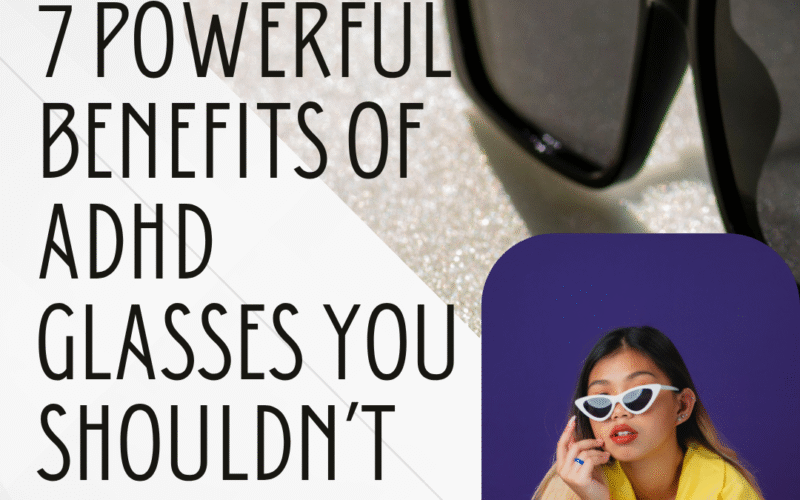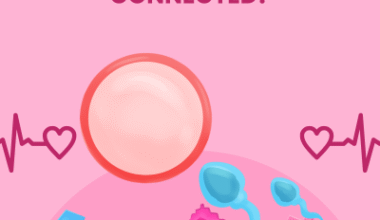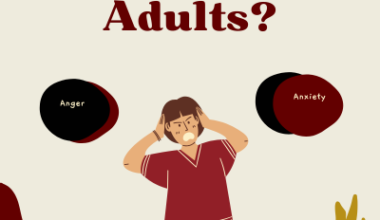If you or someone you love struggles with constant distractions, headaches, or feeling stressed by bright lights and screens, ADHD glasses might be worth considering. These specially designed glasses don’t cure ADHD, but they can make daily life easier by reducing visual overload and improving focus.
In this post, we’ll explore seven powerful benefits of ADHD glasses and why so many people with ADHD are adding them to their toolkits.
What Is the Link Between ADHD and the Eyes?
Many people wonder if ADHD affects the eyes directly. While ADHD doesn’t cause eye problems in the medical sense, research shows it can influence how a person uses their eyes and processes visual information.
People with ADHD often struggle with visual tracking and focus stability. This means their eyes may jump around more when reading or following moving objects. They might lose their place in a book, skip words, or find it tiring to read for long periods. Some also experience visual overstimulation, where busy environments or bright lights feel overwhelming, making it harder to concentrate.
In simple terms, ADHD affects the brain’s ability to filter and organize what the eyes see. This is why tools like ADHD glasses, colored overlays, or visual therapy can help manage these challenges. They don’t treat ADHD itself but can reduce visual distractions and support better focus in daily tasks.
 How Does ADHD Affect the Eyes?
How Does ADHD Affect the Eyes?
ADHD doesn’t damage the eyes themselves, but it can affect how they work together and process information. Here’s how ADHD can affect the eyes and visual experience in daily life:
1. Eye tracking and coordination problems
People with ADHD may have trouble moving their eyes smoothly, especially when reading. Their eyes might jump or lose their place, making reading harder and more tiring.
2. Visual attention issues
Focusing on visual tasks for long periods, like reading or watching a screen, can be challenging. Attention drifts easily, making it harder to stay engaged with what they’re seeing.
3. Sensitivity to light
Some individuals with ADHD are more sensitive to bright or flickering lights. This can cause discomfort, squinting, or headaches, especially in places with fluorescent lighting.
4. Visual processing speed
Even with normal eyesight, processing what the eyes see can be slower. This can affect reading, pattern recognition, and quick decision-making during visual tasks.
5. Eye strain and fatigue
Inconsistent focus may lead to less blinking or longer staring, causing dry eyes and discomfort during tasks like reading or computer use.
6. A higher risk of certain vision conditions
Children with ADHD are more likely to have issues like convergence insufficiency, where the eyes struggle to work together up close. This can cause blurred vision and eye strain.
Can ADHD Cause Blurry Vision?
ADHD itself doesn’t directly cause blurry vision, but many people with ADHD report experiencing it, especially during tasks that require long periods of focus, like reading or using a computer. This is often due to eye strain, poor visual tracking, or difficulty maintaining steady focus rather than an issue with the eyes’ physical health. Sometimes, ADHD medications can also cause side effects like dry eyes, which may lead to temporary blurred vision. If you notice persistent blurry vision, it’s important to see an eye doctor to rule out other eye problems and discuss ways to reduce eye strain while managing ADHD symptoms.
What Could Help People With ADHD and Vision Problems?
People with ADHD and vision problems can benefit from tools that reduce visual stress and support focus. ADHD glasses with tinted lenses can help filter out harsh lights and reduce glare, making it easier to read or work on screens without feeling overwhelmed. Some people find colored overlays or changing screen backgrounds helpful, as these can improve contrast and reduce the visual discomfort that often distracts them from tasks. Visual therapy exercises prescribed by an optometrist can also improve eye tracking, teaming, and focus stability, which are common struggles for people with ADHD.
Alongside these tools, simple lifestyle changes can make a big difference. Taking regular breaks during reading or computer work helps reduce eye strain and mental fatigue. Following the 20-20-20 rule, adjusting lighting to be softer and more natural, and keeping a clean, uncluttered workspace can limit distractions.
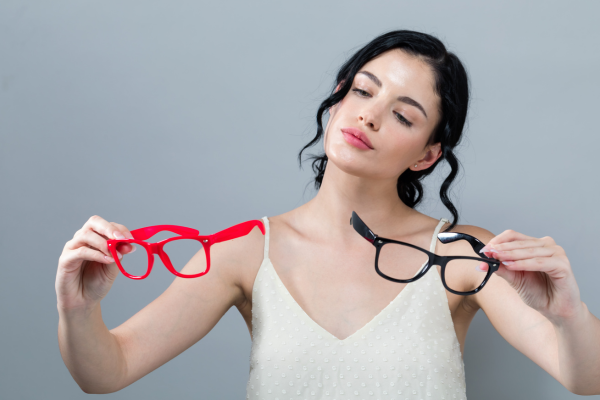 Could ADHD Be A Misdiagnosis?
Could ADHD Be A Misdiagnosis?
Yes, ADHD can sometimes be a misdiagnosis. Many conditions have symptoms that look similar to ADHD, such as anxiety, depression, sleep disorders, learning difficulties, or vision and hearing problems. For example, a child who can’t focus in class might have undiagnosed vision issues rather than ADHD. This is why it’s important to have a thorough assessment by a qualified professional who can rule out other possible causes before diagnosing ADHD. If you or your child has been diagnosed with ADHD but treatment doesn’t seem to help, it might be worth getting a second opinion to ensure the diagnosis is accurate.
Misdiagnosis can also happen when emotional or environmental factors are involved. A child dealing with stress at home, bullying, or emotional trauma might appear distracted or impulsive, but these behaviors could be coping responses, not signs of ADHD. Similarly, lack of sleep, nutritional deficiencies, or excessive screen time can cause symptoms that mimic ADHD.
To avoid misdiagnosis, it’s essential to take a comprehensive approach. This means ruling out other conditions, getting input from multiple sources (parents, teachers, or caregivers), and possibly seeking evaluations from specialists like psychologists, neurologists, or developmental optometrists. In some cases, tools like ADHD glasses may help if the root issue is visual stress rather than attention alone.
Do ADHD Glasses Work?
ADHD glasses can be helpful for some people, but they’re not a cure for ADHD. These glasses have tinted lenses or blue light filters designed to reduce glare, visual distractions, and light sensitivity. Many people with ADHD feel easily overwhelmed by bright lights or busy visual environments, and wearing these glasses can make it easy to focus by calming the visual input. For example, colored lenses can make reading more comfortable for those who experience visual stress or sensitivity to light.
However, it’s important to note that research on ADHD glasses is limited. While some people notice a significant improvement in their ability to concentrate and feel less visually overwhelmed, others don’t experience much change. Their effectiveness largely depends on individual needs, such as whether someone also has visual processing difficulties or light sensitivity alongside ADHD.
What are your ADHD-type eyes?
When people talk about “ADHD-type eyes,” they’re referring to the unique ways ADHD can affect how your eyes work and how you process what you see. ADHD doesn’t change the physical structure of your eyes; it influences eye movements, focus, and visual processing. Many people with ADHD have issues like poor visual tracking, where their eyes don’t smoothly follow words on a page, making reading tiring or causing them to lose their place easily. Some also experience difficulty shifting focus quickly between tasks or distances, such as looking up from a notebook to the board in class.
People with ADHD often feel overwhelmed in bright, busy environments, where there’s too much visual information to filter out. This can lead to headaches, eye strain, or a sense of constant distraction. In these situations, ADHD glasses can be very helpful. ADHD glasses with tinted lenses or blue light filters can reduce glare and soften harsh lighting, making it easier to keep your eyes comfortable and your mind focused.
 Is Being Unable to Relax Eye Focus a Symptom of ADHD?
Is Being Unable to Relax Eye Focus a Symptom of ADHD?
ADHD affects the brain’s ability to regulate attention, and this includes visual attention. People with ADHD often have trouble shifting their eyes smoothly from one point to another or relaxing their focus after intense visual tasks. This issue can also be linked to visual processing problems, which are common in people with ADHD. If someone spends long periods on a task, their eyes can become strained, leading to blurry vision or difficulty refocusing afterward. It’s also worth noting that the side effects of ADHD medications, such as dry eyes, can add to these visual discomforts.
However, difficulty relaxing eye focus can also be caused by eye muscle strain, uncorrected vision problems, or neurological conditions unrelated to ADHD. That’s why it’s important to see an optometrist or ophthalmologist if you experience persistent issues with focusing or relaxing your eyes. A comprehensive eye exam can identify underlying problems and guide you toward solutions like vision therapy, glasses, or lifestyle adjustments to reduce strain. Using ADHD glasses that reduce blue light and eye strain can help ease this visual stress.
What Are the Best Habits for ADHD?
The best habits for ADHD are those that build structure, reduce stress, and make daily life easier to manage. Creating a simple daily routine is essential. Waking up, eating, working, and going to bed at the same time each day helps your brain know what to expect and reduces decision fatigue. Breaking tasks into small, specific steps also makes them feel more doable.
Using timers and alarms is another helpful habit. Techniques like the Pomodoro Technique, working for 25 minutes and taking a 5-minute break, can keep you focused without burning out. Decluttering your space is important too, as a clear environment reduces visual distractions. For some people, using ADHD glasses can make tasks easier by filtering out harsh lights and reducing visual overstimulation, especially when working under bright lights or screens for long periods.
Can People with ADHD Become Successful by Using Tools Like ADHD Glasses?
What Is Convergence Insufficiency, and Can ADHD Glasses Help?
Convergence insufficiency is an eye condition where your eyes struggle to work together when focusing on close objects, like when reading or using a phone. Instead of both eyes turning inward smoothly to focus, they drift outward slightly, causing blurred or double vision, eye strain, headaches, or difficulty concentrating on close-up tasks. This can make reading feel tiring and frustrating, especially for people who already struggle with focus, like those with ADHD.
While ADHD glasses aren’t designed to treat convergence insufficiency directly, they can help in some cases. Glasses with specific prism lenses prescribed by an eye doctor can support eye alignment and reduce symptoms. ADHD glasses with tinted lenses or blue light filters may help reduce visual stress and glare, making reading and close-up work more comfortable. However, vision therapy is often the main treatment for convergence insufficiency, which involves specific eye exercises designed to improve coordination and strengthen the eye muscles.
Can Poor Colour Perception Affect Focus or Learning, and Can ADHD Glasses Help?
Yes, poor colour perception can affect focus and learning, especially in environments where color is used to organize information, highlight important details, or improve readability. Colour perception issues, often called color vision deficiencies, make it difficult to distinguish between certain colors, such as reds and greens or blues and yellows. For students or adults with these challenges, reading colored charts, graphs, highlighted notes or classroom materials can become confusing and overwhelming, leading to frustration, reduced focus, and slower learning.
For people with ADHD, who already struggle with attention and processing overload, poor color perception can add an extra layer of difficulty. They may find it hard to keep track of visual information or stay engaged with study materials that use color coding as a learning aid. This is where ADHD glasses can sometimes help. ADHD glasses can soften harsh white page glare and improve reading comfort, while blue light filtering glasses reduce screen glare and visual fatigue during long study or work sessions.
What Is Binocular Vision Dysfunction, and Can ADHD Glasses Help?
Binocular vision dysfunction (BVD) is a condition where your eyes struggle to work together as a team. Even if each eye is healthy on its own, it may not align properly when focusing on objects, leading to symptoms like double vision, blurred vision, headaches, dizziness, eye strain, and trouble with depth perception. People with BVD often feel tired after reading or working on screens and may find it hard to concentrate during close-up tasks. In children, BVD can sometimes look like ADHD because it causes difficulty focusing, restlessness, and frustration with reading or schoolwork.
ADHD glasses can play a supportive role for people with binocular vision dysfunction. However, it’s important to note that if BVD is suspected, seeing a qualified optometrist or vision therapist is crucial. They can diagnose the condition accurately and recommend treatments. ADHD glasses can then be used alongside these treatments to manage visual stress, reduce sensory overload, and improve overall comfort and focus in daily tasks.
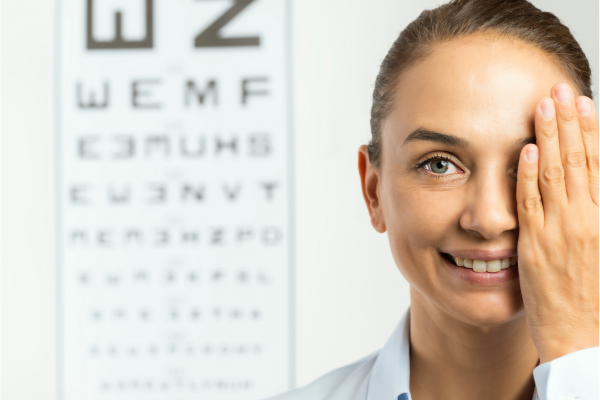 Are There Specific Glasses Designed for Individuals With ADHD?
Are There Specific Glasses Designed for Individuals With ADHD?
No, there aren’t glasses made specifically to treat ADHD itself, but there are types of glasses that can help manage some of the visual challenges people with ADHD often face. These are called ADHD glasses, and they usually have tinted lenses or blue light filters. Tinted lenses can reduce glare, soften bright lights, and make reading or screen use more comfortable, especially for those who feel overwhelmed by visual input. Blue light filtering glasses can help reduce eye strain and headaches from long hours on digital devices, which is helpful for focus and comfort during study or work.
Some people with ADHD also have visual processing difficulties or conditions like convergence insufficiency or binocular vision dysfunction. For these, specific lenses like prism glasses, prescribed by an eye doctor, can support eye alignment and reduce double vision or eye strain. These glasses don’t treat ADHD itself, they can make a big difference in managing daily tasks by creating a calmer visual environment and reducing distractions.
What Is Neuro-Glasses Intervention, and How Does It Help?
Neuro-glasses intervention refers to the use of specially designed glasses that aim to support brain function by altering how visual information is processed. These glasses often have colored or tinted lenses that change how light enters the eyes and how the brain interprets it. They’re used for conditions like visual stress, dyslexia, and sometimes sensory processing issues, helping to reduce overstimulation, improve reading comfort, and support focus.
When it comes to ADHD, neuro-glasses work similarly to ADHD glasses by calming visual input and reducing distractions. Many people with ADHD feel overwhelmed by bright lights, flickering screens, or busy visual environments, which can make it hard to concentrate. Neuro-glasses intervention helps by filtering certain wavelengths of light, creating a more comfortable and stable visual environment for the brain to process. This can lead to improvements in reading speed, comprehension, and overall focus, especially during study or screen time.
Although neuro-glasses don’t treat ADHD itself, they act as a supportive tool to manage sensory and visual overload that often comes with ADHD. Like tinted ADHD glasses, they help reduce glare and visual stress, making daily tasks like reading, working, or studying feel easier and less tiring.
Other Treatment Options For Addressing Vision Issues With ADHD
Apart from ADHD glasses, several treatment options can help manage vision issues linked to ADHD. Vision therapy is one of the most effective. It involves a series of eye exercises prescribed by an optometrist to improve skills like eye tracking, teaming, and focus stability. This can make reading, writing, and close-up work easier and less tiring.
Another option is using colored overlays or reading rulers, which can reduce visual stress and make the text clearer for those who struggle with reading discomfort. Regular eye exams are also important to rule out underlying vision problems that may be contributing to focus issues. In some cases, prism lenses may be prescribed to help with eye alignment problems like convergence insufficiency.
 Are ADHD Glasses Worth It?
Are ADHD Glasses Worth It?
ADHD glasses can be worth it for many people, especially those who struggle with visual stress, light sensitivity, or feeling overwhelmed by busy environments. These glasses are designed with tinted lenses or blue light filters to reduce glare, soften harsh lighting, and calm visual input. For example, if you find fluorescent lights in classrooms or offices distracting, ADHD glasses can filter out those harsh frequencies, creating a more comfortable visual environment that supports better focus.
Many people with ADHD experience headaches, eye strain, or fatigue after reading, studying, or using screens for long periods. ADHD glasses can help by making text clearer, reducing flicker from screens, and cutting down on visual distractions that can quickly drain focus and energy. Some glasses use colored lenses, which can improve contrast and reduce discomfort while reading or working under bright lights. Others are designed to filter blue light from digital devices, reducing eye strain and making screen time easier on the eyes.
However, it’s important to understand that ADHD glasses are not a cure for ADHD. Their effectiveness varies from person to person. Some people notice a big difference in their ability to concentrate and feel less visually overwhelmed, while others may see only minor changes. The benefits often depend on whether the person also has related visual processing issues, light sensitivity, or conditions like convergence insufficiency that affect how their eyes work together.
Why Do People with ADHD Need Glasses?
People with ADHD may not need glasses to correct blurry vision like those with eyesight problems, but they often benefit from ADHD glasses designed to reduce visual stress and sensory overload. ADHD affects how the brain processes visual information, which can make everyday tasks more challenging. Many people with ADHD struggle with light sensitivity, feel overwhelmed by busy visual environments or have trouble keeping their eyes focused on reading and screen work for long periods. ADHD glasses can help by creating a calmer and more comfortable visual experience, making it easier to concentrate without feeling drained or distracted.
For example, bright lights, flickering screens, or busy visual environments can feel overwhelming and distracting for someone with ADHD. This can lead to headaches, eye strain, fatigue, and difficulty concentrating on schoolwork, reading, or office tasks. ADHD glasses, often designed with tinted lenses or blue light filters, can help by reducing glare and softening harsh lights. This creates a calmer visual experience that supports better focus and comfort, especially during reading, studying, or working on digital devices.
Many people with ADHD have related visual processing difficulties, such as poor visual tracking, convergence insufficiency, or binocular vision dysfunction, which affect how their eyes work together. This can make reading tiring, cause blurred or double vision, or lead to frequent loss of place in a text. In such cases, glasses with specific lenses, like prism lenses prescribed by an eye doctor, can support eye alignment and make close-up tasks easier.
It’s important to note that ADHD glasses don’t treat ADHD itself. They’re a supportive tool to manage some of the visual challenges that come with it.
Frequently Asked Questions
1. Do ADHD glasses really help with focus?
ADHD glasses don’t cure ADHD, but they can help improve focus by reducing glare, light sensitivity, and visual distractions, creating a calmer visual environment that makes concentrating easier.
2. Can anyone use ADHD glasses, or are they only for people with ADHD?
While ADHD glasses are designed to support people with ADHD who struggle with visual stress, anyone who experiences glare, eye strain, or light sensitivity can benefit from tinted or blue light-filtering lenses.
3. Are ADHD glasses the same as blue light glasses?
Not exactly. Blue light glasses specifically filter blue light from screens, while ADHD glasses often have tinted lenses designed to reduce overall visual stress and overstimulation, not just blue light.
4. Do I need a prescription for ADHD glasses?
Some ADHD glasses, like tinted overlays or non-prescription blue light glasses, can be bought without a prescription. However, if you have vision problems or need prism lenses, it’s best to see an eye doctor for personalized advice.
